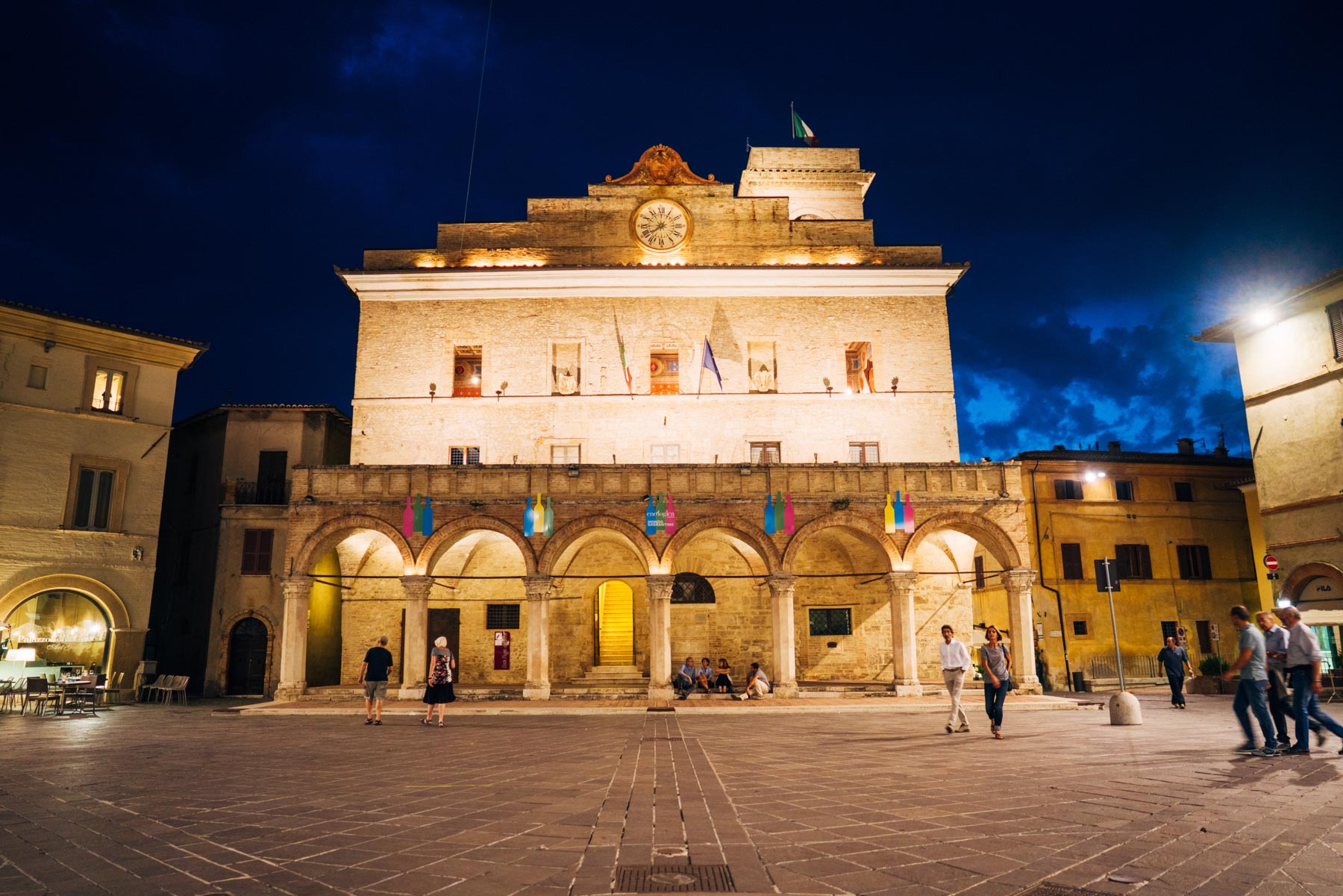
Montefalco is the heart of the Sagrantino terroir. Walking through its streets, admiring the Umbrian Valley from the spectacular belvedere just outside the walls, discovering the small urban gardens where old Sagrantino vines grow, you will understand why the two names, Sagrantino and Montefalco, are almost synonymous.
Situated on the top of a hill and protected by ancient walls, Montefalco rises at the intersection of the valleys of the Clitunno, Topino and Tiber rivers. Probably founded as a rural village inhabited by Umbrian populations, it was populated in Roman times by patrician villas, of which the Civic Museum preserves interesting epigraphic and sculptural finds.
It was first called Coccorone, according to some from the name of the alleged founder, the Roman senator Marcus Curion, according to others from the Greek óros (mountain). Between 1239 and 1240, the name was changed to Montefalco, according to local tradition, in honour of Frederick II of Swabia, an expert in the art of falconry. Rediscovered in the 19th century thanks to the passion of Romantic travellers for the Middle Ages and studies on the figure of St. Francis, Montefalco owes much of its charm to its geographical location, which earned it the nickname "the railing of Umbria" in the 1970s. But already in 1903, Gabriele D'Annunzio, among the sonnets of his Laudi dedicated to the Cities of Silence, celebrated Montefalco for its extraordinary synthesis of landscape, art and Franciscan spirituality, and for the inimitable harmony that derives from it.
Montefalco, Benozzo frescoed the beautiful walls, ebro of love for every creature
alive, brother to the G, like Francis.
As sweet as the apple and peach trees on the knoll, as clear as the Clitunno to the plain, of flowers and water was her pinture, blessed by the smile of Francis.
And did you not also give blue to your blond Melanzio, and green? Green of shrubs, blue of hills, for altars;
So that it seems as if the very heavens themselves light up
Thy country, and in thy deepest heart the soul that adorned thy brushes.
On Corso Mameli you will find the splendid San Francesco Museum Complex, with the extraordinary frescoes by Benozzo Gozzoli and Perugino and the cellars of the Franciscan convent. One of the most beautiful places in Umbria, the church of San Francesco is an exceptional document of Italian art and the spread of Franciscanism. A few dozen metres away is the central Piazza del Comune: from there, venture out to explore the streets branching off in various directions.
Then, stop at one of the restaurants or wine bars in the centre, where you can taste local specialities accompanied by a good glass of Sagrantino: this is the best way to prepare yourself for an afternoon in which to let time pass you by and experience the area dotted with small enchanting villages, vineyards, olive groves and wineries that, through their production, enhance the potential of a grape variety with exceptional longevity and personality such as Sagrantino. Among the wineries, those of the Associazione Grandi Cru di Montefalco, strongly committed to the development of the territory and its economy through innovative production practices with low environmental impact, are worth a stop.
Guided urban trekking with tasting
An urban trek is organised every first Sunday of the month, starting from the Museo di San Francesco. It consists of a guided pedestrian route through medieval streets, cloisters and courtyards to discover palaces, churches, places and flavours of the past, ending with a free tasting of Sagrantino at the Museum's wine shop.